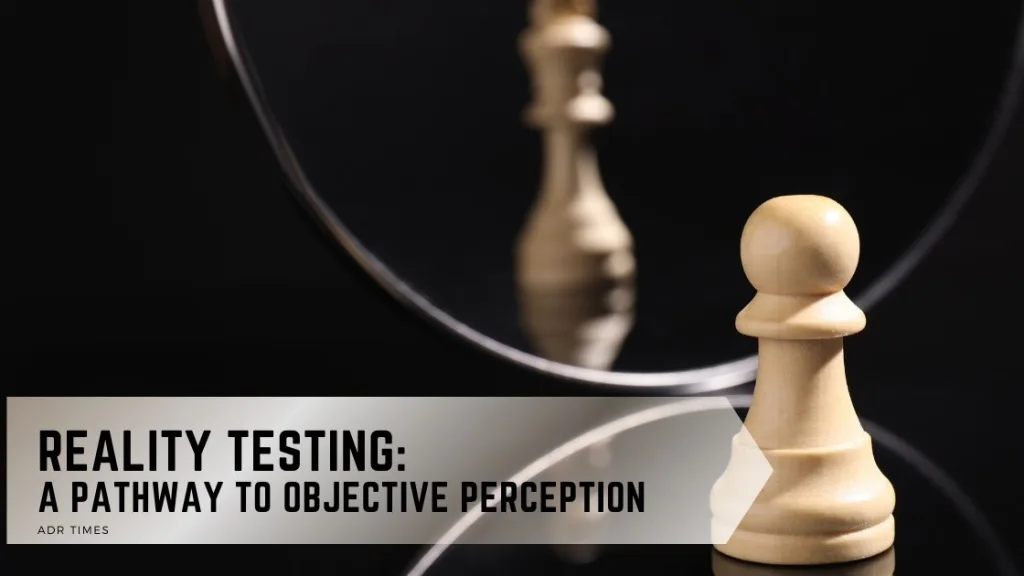
Reality testing is a process that involves distinguishing between what’s happening in your mind and what’s happening in the physical world around you. It’s a vital component of cognitive functioning that helps us differentiate between our subjective perceptions and the objective reality of everyday life.
Reality testing can help people react appropriately to their feelings without damaging thoughts affecting their perception of the external world. The ability to do a reality test can be helpful for those who get carried away by their thoughts or inner world.
This post will explain reality testing, why it is essential, and share some helpful techniques that can be applied to daily life.
What Is Reality Testing?
In simple terms, reality testing is the ability to perceive the world accurately and to differentiate between what’s real and unreal, as well as our external and internal world. It’s an essential part of our cognitive processing that allows us to function appropriately.
When reality testing is compromised, it can lead to delusions, hallucinations, or other forms of distorted perception.
Reality testing is an integral part of psychoanalysis, where it often refers to the ability to see the world as it is rather than how we wish or fear it to be.
Sigmund Freud first introduced the concept by exploring the human mind’s complexities and intricacies.
The Importance of Reality Testing
Why is reality testing important? It allows us to navigate the world safely and effectively. By accurately perceiving the world, we can make informed decisions, solve problems, and interact appropriately with others.
When our reality testing is skewed, it can lead to various problems. These might include misinterpreting social cues, making poor decisions based on inaccurate perceptions, or even experiencing symptoms of mental health disorders such as psychosis or schizophrenia.
Reality testing enables us to accurately gauge how much emotion is required in a social context. It challenges a person’s thoughts and pushes against all-or-nothing thinking.
We all inevitably experience difficulties in our everyday lives. Reality testing helps us keep our feelings firmly grounded and judge situations appropriately without being overly carried by our emotional landscape.
Techniques for Reality Testing
Several techniques can improve our ability to engage in reality testing. Here are a few strategies you might consider using:
Mindfulness
This practice involves paying attention to the present moment without judgment. It can help us become more aware of our thoughts and feelings, allowing us to recognize when they may not align with reality.
Mindfulness involves paying attention to the present moment without judgment, fostering an increased awareness of our thoughts and feelings.
As we become more aware, we can better recognize when our thoughts or feelings don’t align with reality, helping us separate subjective perceptions from objective facts.
Moreover, mindfulness can help reduce stress and enhance overall well-being, making it a tool for reality testing and improving mental health.
Self-reflection
Reflecting on our thoughts and feelings can help us identify when our perceptions may be skewed. By questioning our assumptions and beliefs, we can often better understand the world.
Self-reflection allows us to challenge our biases and preconceived notions, giving us a more transparent, more objective view of situations and events.
Seeking Feedback
Sometimes, seeking external perspectives to ensure our perceptions are accurate can be helpful. This could involve asking a trusted friend or family member for their perspective or seeking professional help.
Feedback from others provides a reality check, offering a different perspective to help us recognize if our perception is distorted.
Journaling
Writing about our thoughts and experiences can provide a valuable opportunity for self-reflection. It can also help us track patterns over time, which might reveal when our perceptions are most likely to be distorted.
Regular journaling can act as a mirror, reflecting our thoughts and emotions and highlighting discrepancies between our internal narratives and the events we experience daily.
The Role of Reality Testing in Mental Health
Reality testing is closely linked to mental health. When reality testing is impaired, it can contribute to conditions like schizophrenia, bipolar disorder, or depression. Conversely, improving reality testing can be an essential part of treatment for these conditions.
For example, cognitive-behavioral therapy (CBT) often involves techniques to enhance reality testing. These might include challenging negative thought patterns, learning to recognize cognitive distortions, or practicing mindfulness.
Final Thoughts
Reality testing is vital to our cognitive processing, allowing us to perceive the world accurately. By practicing mindfulness, self-reflection, seeking feedback, and journaling, we can improve our reality testing and navigate the world more effectively.
Moreover, enhancing reality testing can play a crucial role in maintaining mental health and managing mental health disorders.
Remember, it’s normal for our thoughts, feelings, and experiences to influence our perceptions. However, by regularly engaging in reality testing, we can ensure that our perceptions are as accurate and objective as possible, giving us a solid foundation for interacting with the world.
If you want to learn more about reality testing, negotiation tactics, mediation, or alternative dispute resolution, contact ADR Times for educational courses and training materials.
Must-read Articles:
- Understanding the Stages of Conflict: A Guide - July 23, 2024
- What Is Dehumanization? An In-Depth Overview - July 12, 2024
- Can Text Messages be Used in Court? A Close Look - July 11, 2024


